7 Reasons You MUST Get Fit For Your Wedges
One of the most important areas of the game is often under represented in custom fittings. Here are the reasons that is a big mistake...
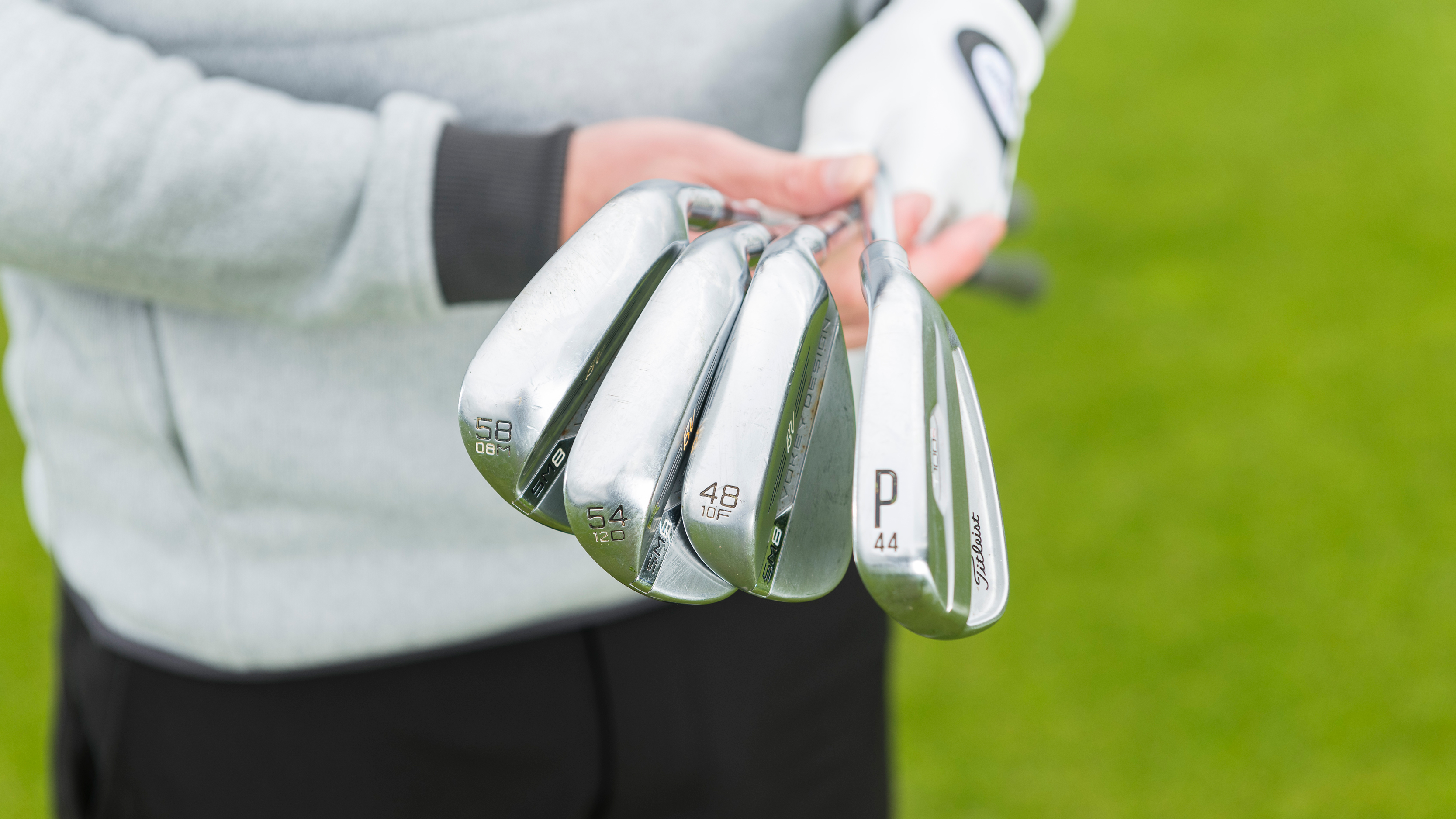

With over half of all your shots taking place within 100 yards of the green, surely we are prioritizing the wedges in our bag as essential tools of the trade? Well according to a study by Golf Datatech, no!
Whilst 68% of what Golf Datatech class as serious golfers have custom fitted drivers in their bag, only a measly 21% have taken the time to get their wedges fitted for them.
As a former mini tour professional, these numbers simply don’t sit right with me. Choosing the best wedges is critical to optimal performance, so, I wanted to highlight seven reasons that you absolutely must get fit for your wedges…
Lie Angle
If you have made it this far into the article, you are likely a serious enough player to have an understanding of what lie angle is. For those of you who don’t know, simply put, it is the angle differential between the sole of the club and the pitch of the shaft.
Wedges are by far and away the most important clubs in the bag to have the lie angle fitted correctly for. This is due to something called face plane tilt and you can illustrate this yourself quite easily at home. Grab a tee peg and your most lofted wedge and rest the ball end of the tee against the face of the club, leaving the pointed end directed away from the face.

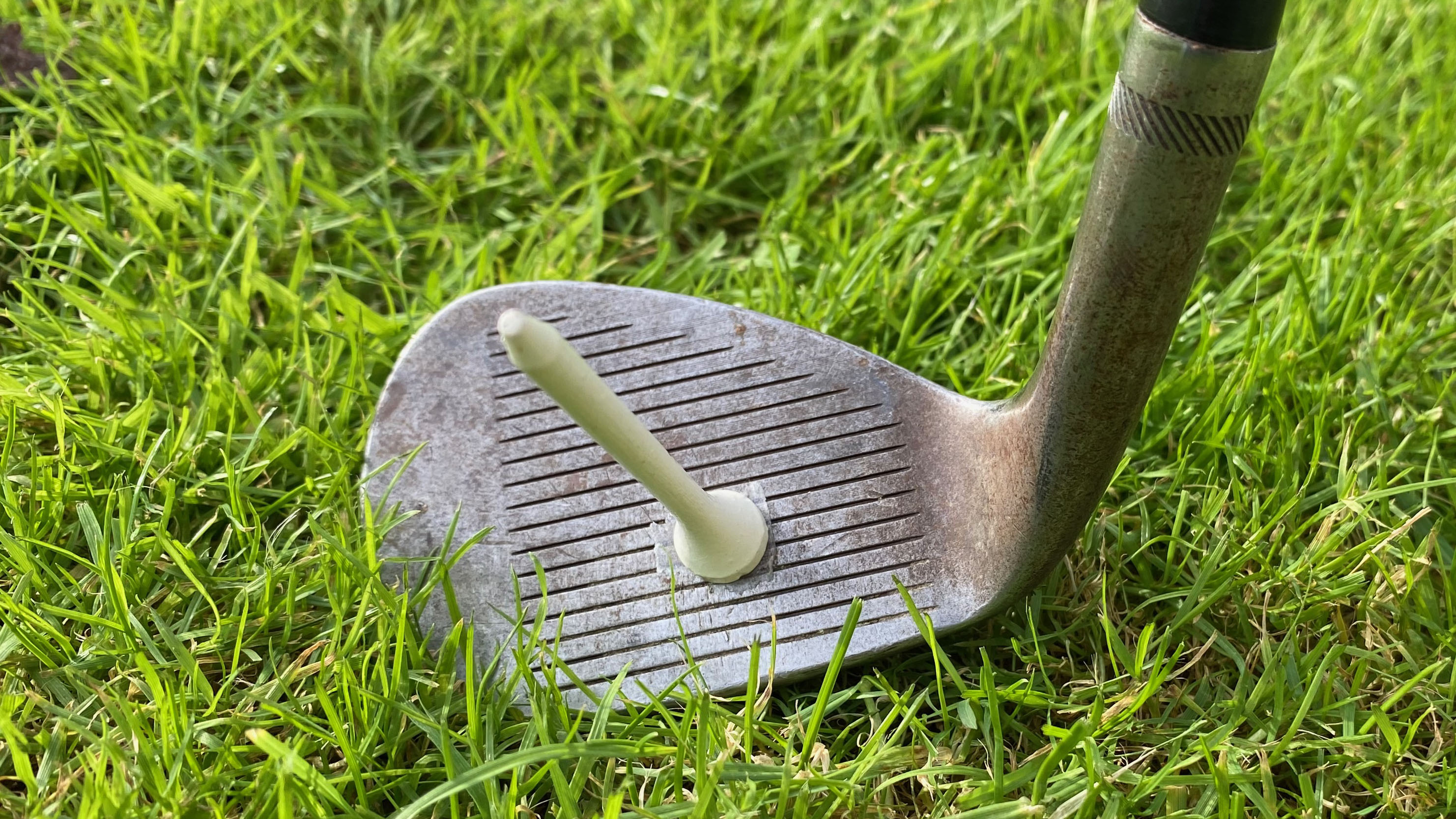

Hold the club up in front of your face with the sole of the club perfectly horizontal and the face square. The tee will point directly at you. Now, without opening or closing the clubface, simply tilt the sole away from horizontal and look at where the tee now points.
The tee is essentially showing you the launch direction here. Face plane tilt becomes more prevalent the more loft we have in our hand, and if you don’t believe me, do the same experiment with your driver!
Subscribe to the Golf Monthly newsletter to stay up to date with all the latest tour news, equipment news, reviews, head-to-heads and buyer’s guides from our team of experienced experts.
That is why it is critical to have the correct lie angle in your wedges. If you have done your job correctly and returned the club face perfectly square to your target, you need that ball to set off on target and if the lie angle is out, then it will not.
Bounce
Bounce is essentially the angle between the leading and trailing edges of your wedges. If you hold them up at eye level, you will generally notice that the trailing edge will sit lower to the ground than the leading edge. The reason for this is to provide some insurance for golfers against the sharp leading edge of the club getting stuck in the ground. With the best high bounce wedges, the lower trailing edge will act somewhat as a rudder, helping to slide the clubhead through the turf more easily and exit a little smoother.
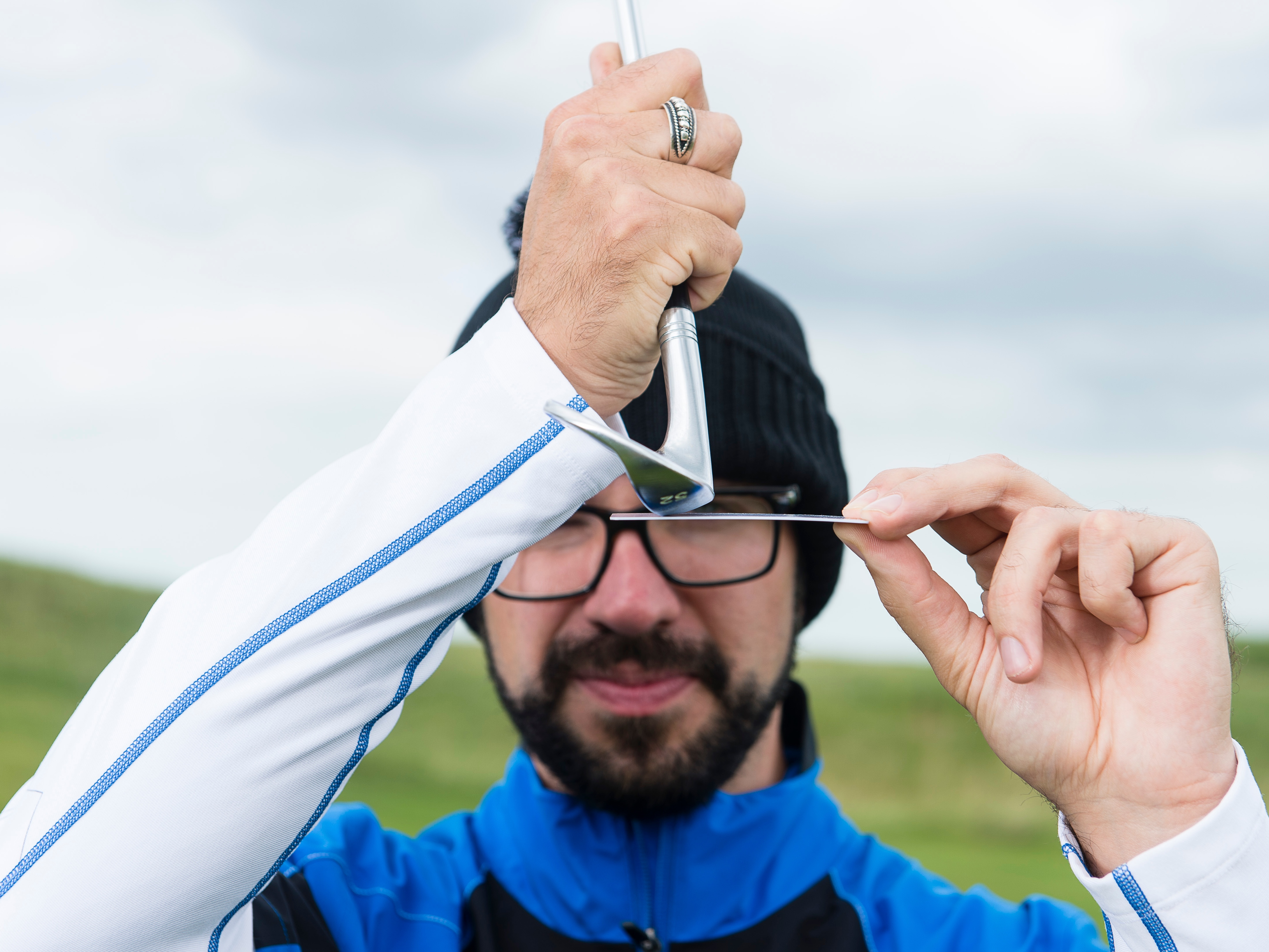
Bounce angle is the angle between the leading and trailing edge of the wedge
The amount of bounce each golfer requires is dependent on a couple of factors, technique and ground conditions.
Firstly, technique. As a general rule, golfers with a steeper attack angle into the ball will require higher bounce wedges to help their club head exit the turf more easily. The opposite is also true. Players with a shallower attack angle generally benefit from a lower bounce with the leading edge sitting a little closer to the ball.
Ground conditions will also play a role in dictating the appropriate bounce and any good fitter will find out what conditions you generally play in and even possibly recommend purchasing two different bounce options if those conditions vary greatly.
Golfers who play most of their golf in firm conditions will require less bounce than those who play on softer surfaces. Low bounce wedges can be very tricky to utilize when the ground is wet and soft as the leading edge will want to dig into the ground and there isn’t the additional trailing edge assistance to get the club back out. This gives you less margin for error as anything struck slightly heavy will probably result in a chunk, whereas with more bounce the trailing edge will stop that digging and help you get away with less than perfect contact.
So, if your strike with your wedge shots isn’t where you want it, get that bounce checked.
Length
Ensuring the correct length of your wedges is an under considered area in my opinion. Controlling the low point of your swing is critical to getting the right strike on your short shots and the length of your wedge has a huge impact on your ability to do so.
Anything too short can leave you reaching too much at impact to get to the bottom of the ball to avoid thinning it, and conversely anything too long for you and you might find your low point coming too early in your arc resulting in fat shots.
Gapping
Controlling the distances of your wedge shots is a vital component of building a strong wedge game. Having the correct number of wedges and loft increments will make this considerably easier to achieve.
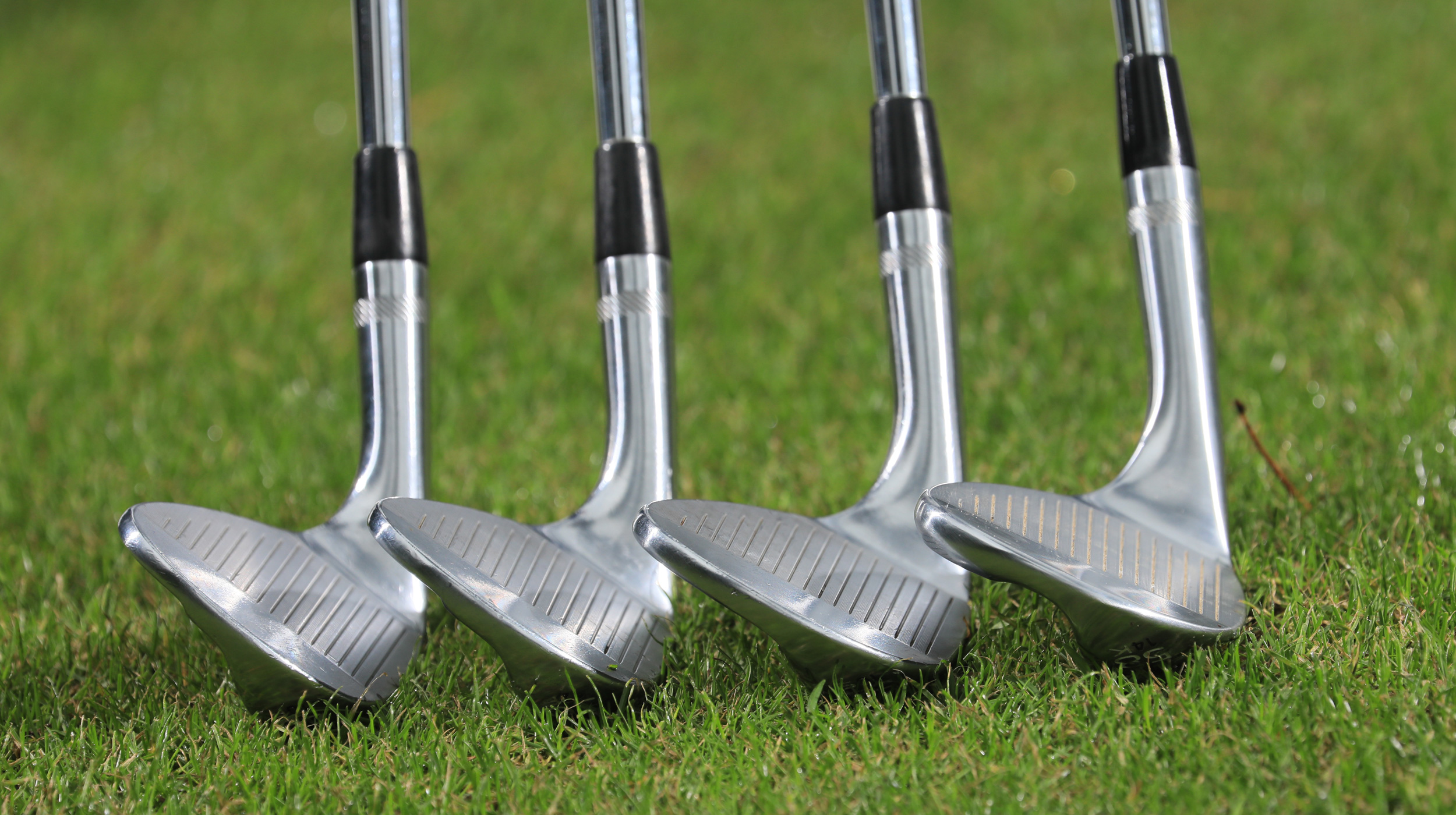
Do you have the correct loft gaps between your wedges?
In my own bag, I have consistent 4 degree increments between my wedges to cover my required yardages with 20 yards between each. My 46 degree wedge flies 140 yards, my 50 degree flies 120 and my 54 degree goes 100 yards through the air. I rarely hit my 58 degree full out but when I do, 80 yards is around the carry number. I then practice around these numbers and try to develop swings and feels that cover the yardages in between.
A good fitter will be able to help you figure out the best wedge make up for you to cover your required yardages and also blend into your iron set.
Shaft flex
Having the right shaft in your wedges is often a forgotten piece of the puzzle. Many players either ignore it altogether or just have the same shaft fitted in their wedges as they do their irons. This is generally a mistake. Think about it, wedge shots in general are played with less speed and force than iron and wood shots and as such the shaft is under less load in the swing.
Whilst having the same brand and model shaft as your iron set isn’t necessarily a bad idea as it will promote consistency of feel, it is worth considering going a flex softer in your wedges to improve feel and responsiveness. This is a practice most tour pros use.

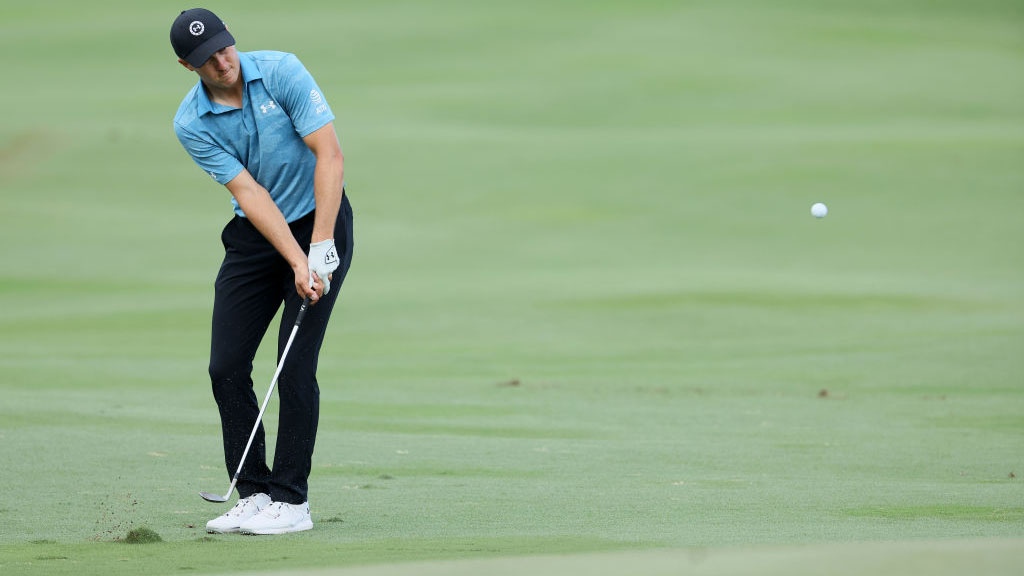
For example Tiger Woods has always played Dynamic Gold X100 shafts in his irons but softens his wedges up with S400 flex in his 56 and 60 degree. Jordan Spieth is another who plays Project X 6.5 flex (X Stiff) shafts in his irons but moves into the softer 6.0 (Stiff) shafts for his wedges.
Give this some consideration when selecting your next wedge.
Swing Weight
For those that don’t know, swing weight is essentially a measure of the balance of a golf club, or where the mass is distributed around the club. It is measured by placing a club on a scale at a 14 inch fulcrum point, then, either manually with a weight or digitally in some cases, will give us a reading of where the balance point is on that golf club.
It is expressed with a letter (generally between B and E) and a number afterwards. A fairly standard swing weight for most clubs in the bag would be between D2 and D4. The more weight at the head end will increase the swing weight up into the E’s for example and more weight at the grip end will reduce swing weight down into the B’s and C’s.

Digital swing weight scale reading at D2.9
This can have a dramatic effect on the feel of the club and the timing of your release. Something too heavy in swing weight for example could make it very difficult to release the club freely enough resulting in mis-strikes and shots to the right whereas a club with too light a swing weight could result in a player over releasing the head and shots to the left. Lighter swing weights can also make it difficult to feel where the head is throughout the swing which can comprise feel.
Ask your fitter to take you through some different swing weights at your next session and you will likely find a sweet spot that provides you with optimal feel and control.
Correct Grip
As your only point of contact with the club, the grip is of huge importance in the feel orientated wedge game.
There are a multitude of grip styles and sizes available to help you find the best grips for your hands. From a size point of view, the thickness of your grips is important to ensure your hands are comfortable and able to move well throughout the swing, Grips that are too thick can restrict release and vice versa.

Some companies such as Ping even offer specialist wedge grips
The style of the grip is also important as it will provide the right amount of traction for your hands when moving the club. Something too slippy may cause you to hold on too tightly to the wedge which will have detrimental effects.
Some companies even make specialist grips for wedges. Ping for example makes a grip called the Dyla-Wedge which is longer than a standard grip to allow the player to grip further down the shaft for added control. This grip also features several small arrows down the front which allow reference points to ensure you are choking down the same length consistently for the shot you require.
A good fitter will provide multiple options to choose from, so don’t overlook the only part of the wedge that you actually touch!

Joe has worked in the golf industry for nearly 20 years in a variety of roles. After a successful amateur career being involved in England squads at every age group, Joe completed his PGA degree qualification in 2014 as one of the top ten graduates in his training year and subsequently went on to become Head PGA Professional at Ryder Cup venue The Celtic Manor Resort. Equipment has always been a huge passion of Joe’s, and during his time at Celtic Manor, he headed up the National Fitting Centres for both Titleist and Taylormade. He’s excited to bring his knowledge of hardware to Golf Monthly in the form of equipment reviews and buying advice.
Joe lives in North Devon and still plays sporadically on the PGA West region circuit. His best round in recent years came earlier in 2023 where he managed a 9 under par 63 at Trevose GC in a Devon & Cornwall PGA Tournament.
Joe's current What's In The Bag?
Driver: Switch between TaylorMade Qi35 and Callaway Elyte TD - both with Fujikura Ventus Black 6-X
Fairway wood 1: TaylorMade BRNR Copper Mini Driver - Fujikura Ventus Black 7-X
Fairway wood 2: Callaway Apex UW 17˚- Fujikura Ventus Black 9-X
Irons: TaylorMade P7CB 3-PW with Dynamic Gold Tour Issue X100 shafts
Wedges: Callaway Opus 50, 54, and 60 degrees - Project X LS 6.0 shafts
Putter: LAB Golf Oz.1 (zero shaft lean)
Ball: TaylorMade 2024 TP5x
Grips: Golf Pride Tour Velvet 60R
Bag: Vessel Player IV Pro DXR Stand